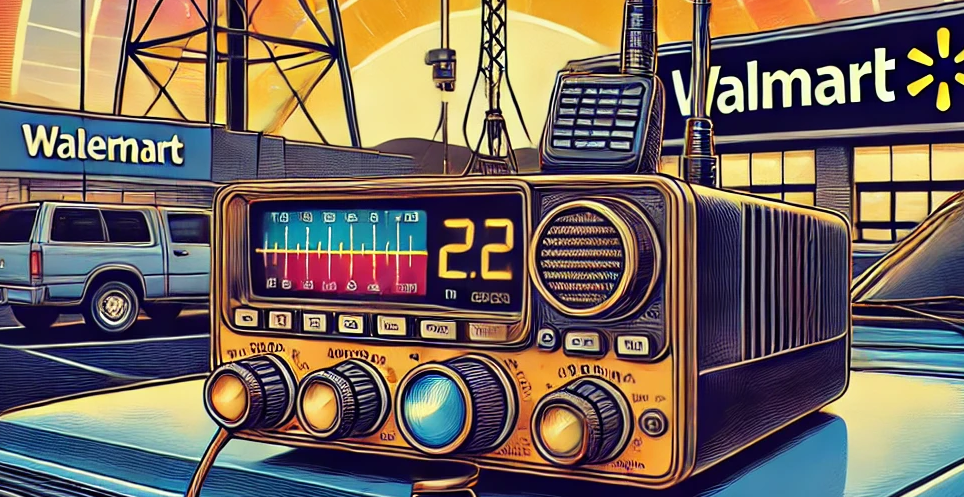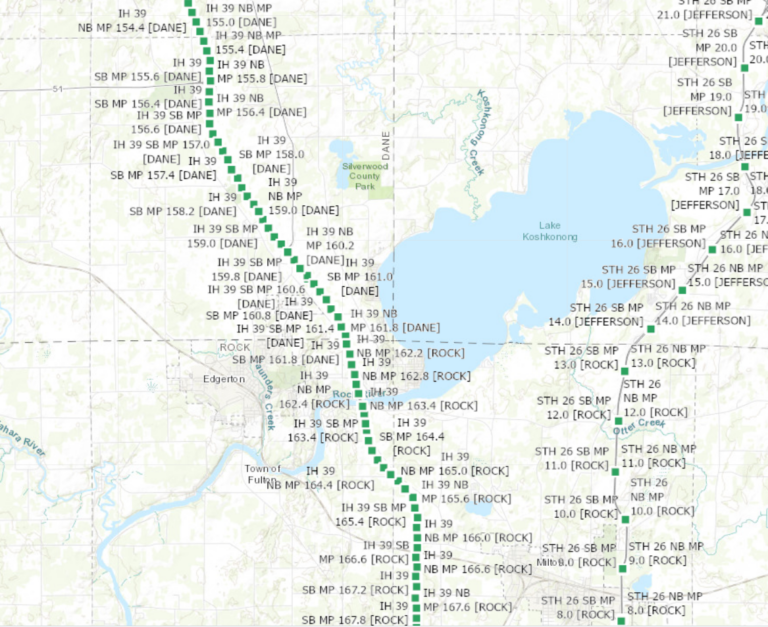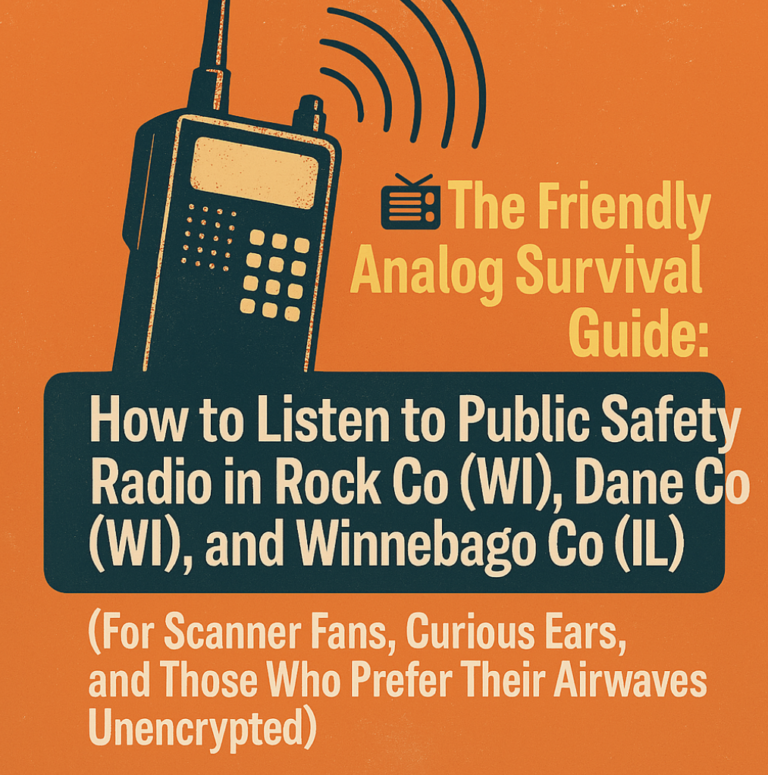
Staying in touch via two-way radios isn’t just for hams and first responders. There’s a whole class of business band frequencies – from Color Dot channels to MURS, GMRS/FRS, and itinerant frequencies – that anyone with the right gear (and licenses, where needed) can use for local communication. Below, you’ll find an expanded frequency chart and practical advice on using these channels legally and effectively. Whether you’re coordinating an event, tinkering with a handheld in a Walmart parking lot, or geeking out over radio trivia, this guide has you covered. (And yes, we’ve thrown in some wit for the radio enthusiasts among us.)
Business Band Frequency Chart (Color Dot, Letter Dot, Star, MURS, GMRS/FRS & Itinerant)
Below is an enhanced chart of common business band frequencies, including the well-known Color Dot, Letter Dot, and Star channels, plus MURS, GMRS/FRS, and additional itinerant frequencies. We’ve listed the frequency, band (VHF/UHF), common uses, and whether an FCC license is required. Note: Most channels require an FCC license unless explicitly marked as license-free (e.g., MURS or FRS with proper equipment). All frequencies listed are accessible with standard VHF/UHF two-way radios.
| Channel Name | Frequency (MHz) | Band | License Requirement | Notes |
|---|---|---|---|---|
| MURS Channel 1 | 151.820 | VHF | No (MURS, 2 W limit) | License-free; simplex only; good for rural use. |
| MURS Channel 2 | 151.880 | VHF | No (MURS, 2 W limit) | License-free; often used by small businesses. |
| MURS Channel 3 | 151.940 | VHF | No (MURS, 2 W limit) | License-free; popular for community events. |
| Red Dot | 151.625 | VHF | Yes (Part 90) | Itinerant; up to 5 W; common for construction. |
| Purple Dot | 151.955 | VHF | Yes (Part 90) | Itinerant; often used by event crews. |
| Blue Dot (MURS 4) | 154.570 | VHF | No (MURS, 2 W limit) | License-free; used by retail (e.g., Walmart). |
| Green Dot (MURS 5) | 154.600 | VHF | No (MURS, 2 W limit) | License-free; common for store communications. |
| VHF Itinerant | 151.505 | VHF | Yes (Part 90) | Itinerant; up to 5 W; shared for mobile use. |
| VHF Itinerant | 151.5125 | VHF | Yes (Part 90) | Narrowband; itinerant; event coordination. |
| VHF Itinerant | 151.700 | VHF | Yes (Part 90) | Itinerant; up to 5 W; trade shows, mobile ops. |
| VHF Itinerant | 151.760 | VHF | Yes (Part 90) | Itinerant; shared for temporary setups. |
| VHF Itinerant | 158.400 | VHF | Yes (Part 90) | Itinerant; up to 5 W; business mobile use. |
| VHF Itinerant | 158.4075 | VHF | Yes (Part 90) | Narrowband; itinerant; roving operations. |
| White Dot (GMRS/FRS 15) | 462.575 | UHF | GMRS: Yes; FRS: No (≤2 W) | GMRS up to 50 W; FRS low power; personal use. |
| Black Dot (GMRS/FRS 16) | 462.625 | UHF | GMRS: Yes; FRS: No (≤2 W) | GMRS license for high power; FRS for walkie-talkies. |
| Orange Dot (GMRS/FRS 17) | 462.675 | UHF | GMRS: Yes; FRS: No (≤2 W) | Often used for emergency comms in GMRS. |
| GMRS/FRS 14 | 462.5625 | UHF | GMRS: Yes; FRS: No (≤2 W) | Shared channel; FRS common in bubble-pack radios. |
| GMRS/FRS 18 | 462.600 | UHF | GMRS: Yes; FRS: No (≤2 W) | Popular for personal use; GMRS for longer range. |
| GMRS/FRS 19 | 462.650 | UHF | GMRS: Yes; FRS: No (≤2 W) | GMRS allows repeaters; FRS low power. |
| GMRS/FRS 20 | 462.6875 | UHF | GMRS: Yes; FRS: No (≤2 W) | Shared; used by families, small groups. |
| GMRS/FRS 21 | 462.700 | UHF | GMRS: Yes; FRS: No (≤2 W) | GMRS for mobile/base; FRS for handhelds. |
| GMRS/FRS 22 | 462.725 | UHF | GMRS: Yes; FRS: No (≤2 W) | Top GMRS/FRS channel; often busy in urban areas. |
| Brown Dot | 464.500 | UHF | Yes (Part 90) | Itinerant; up to 35 W; used for duplex/repeaters. |
| Yellow Dot | 464.550 | UHF | Yes (Part 90) | Itinerant; up to 35 W; pairs with 469.550 MHz. |
| J Dot | 467.7625 | UHF | Yes (Part 90, 2 W limit) | Itinerant; low-power handheld use. |
| K Dot | 467.8125 | UHF | Yes (Part 90, 2 W limit) | Itinerant; common in pre-programmed radios. |
| Silver Star | 467.850 | UHF | Yes (Part 90, 2 W limit) | Itinerant; used by nationwide retail chains. |
| Gold Star | 467.875 | UHF | Yes (Part 90, 2 W limit) | Itinerant; popular for large businesses. |
| Red Star | 467.900 | UHF | Yes (Part 90, 2 W limit) | Itinerant; shared by mobile crews. |
| Blue Star | 467.925 | UHF | Yes (Part 90, 2 W limit) | Itinerant; common in urban business comms. |
| UHF Itinerant | 451.800 | UHF | Yes (Part 90) | Itinerant pair with 456.800 MHz; up to 35 W. |
| UHF Itinerant | 456.800 | UHF | Yes (Part 90) | Pairs with 451.800 MHz; mobile operations. |
| UHF Itinerant | 451.8125 | UHF | Yes (Part 90) | Narrowband; pairs with 456.8125 MHz. |
| UHF Itinerant | 456.8125 | UHF | Yes (Part 90) | Itinerant; used for temporary setups. |
| UHF Itinerant | 469.500 | UHF | Yes (Part 90) | Pairs with 464.500 MHz (“Brown duplex”). |
| UHF Itinerant | 469.550 | UHF | Yes (Part 90) | Pairs with 464.550 MHz (“Yellow duplex”). |
Notes:
- VHF (136–174 MHz) offers better range in open/rural areas; UHF (400–470 MHz) is better for urban/indoor use due to building penetration.
- MURS (Multi-Use Radio Service) is license-free for all users; limited to 2 W, no repeaters, analog FM only.
- GMRS/FRS channels 14–22 are shared; FRS is license-free with low-power certified radios (≤2 W); GMRS requires a personal license for higher power (up to 50 W on some channels).
- Itinerant frequencies allow nationwide use without frequency coordination but are shared, so expect potential interference.
- Part 90 channels require a business/organizational FCC license; power limits vary (2 W to 35 W depending on the channel).
What Are These Frequencies?
Color Dot Frequencies
Color Dot channels (e.g., Red Dot, Blue Dot) are nicknamed business frequencies identified by color labels for ease of use. Manufacturers used colored stickers or “dots” to help non-technical users match radios without memorizing frequencies. These cover both VHF and UHF, with some (Blue Dot, Green Dot) now part of license-free MURS, while others require a Part 90 license.
Letter Dot Frequencies
J Dot (467.7625 MHz) and K Dot (467.8125 MHz) are UHF itinerant channels with letter labels, used when manufacturers ran out of colors. They’re low-power (2 W) and require a Part 90 license, often found in pre-programmed business radios.
Star Channels
Star channels (Silver, Gold, Red, Blue) are UHF itinerant frequencies (467.850–467.925 MHz) used by businesses like retail chains for nationwide communication. They’re limited to 2 W and require a Part 90 license. The “star” name comes from manufacturer branding, often marked with star symbols.
MURS (Multi-Use Radio Service)
MURS offers five VHF frequencies (151.820–154.600 MHz) for license-free use by anyone. With a 2 W limit and no repeaters, it’s ideal for small businesses, event organizers, or hobbyists needing short-range comms without licensing hassles.
GMRS/FRS Channels
GMRS/FRS channels (462.5625–462.725 MHz) are UHF frequencies shared between Family Radio Service (license-free, low power) and General Mobile Radio Service (license required for higher power). White, Black, and Orange Dot are GMRS/FRS channels 15–17, with additional channels 14 and 18–22 added for completeness.
Itinerant Frequencies
Itinerant frequencies are for temporary, roving use (e.g., event staff, mobile crews). They’re licensed for wide areas without frequency coordination, making them easy to use but shared, so cooperation is key. New additions include VHF (151.505, 151.5125, etc.) and UHF (451.800/456.800, etc.) pairs for simplex or duplex operations.
FCC Licensing 101: Staying Legal
- Part 90 (Business/Itinerant): Requires an FCC license for Color Dot, Letter Dot, Star, and other itinerant channels. Apply via the FCC for a business/organizational purpose; fees apply, valid for 10 years.
- MURS: License-free for all users; use certified MURS radios (2 W limit, no repeaters).
- FRS: License-free with certified radios (≤2 W, fixed antennas); covers GMRS/FRS channels at low power.
- GMRS: Requires a personal FCC license (no test, fee-based) for higher power or mobile use; not for business use.
- Etiquette: Shared channels (especially itinerants) require cooperation. Listen before transmitting to avoid interference. Use CTCSS/DCS tones to filter unwanted chatter, but remember they don’t privatize the channel.
Practical Tips for Using These Frequencies
- Check Channel Activity: Especially near businesses (e.g., retail stores on MURS or Star channels), listen first to avoid interrupting. If you’re in a Walmart lot and hear Blue Dot chatter, switch channels to avoid confusion.
- Explain Yourself: If questioned (e.g., by a store manager), calmly explain you’re using a public or licensed frequency. Keep a copy of your license or FCC rules handy for MURS/FRS.
- Mobile Setup: Use a mag-mount antenna for better range in vehicles. Ensure antennas are tuned for VHF or UHF to avoid interference.
- CTCSS/DCS Tones: Set tones to reduce background chatter, but know others can still hear you. Don’t share sensitive info on shared channels.
- Backup Channels: Plan alternates (e.g., “Primary: Blue Dot; Backup: MURS 3”) to quickly switch if a channel is busy.
Beginner-Friendly Radios
- MURS (License-Free): Motorola RMM2050 or BTech MURS-V1; rugged, pre-set for MURS channels.
- FRS/GMRS: Midland/Cobra FRS walkie-talkies for license-free use; Midland GXT or Motorola Talkabout for GMRS (with license).
- Part 90 (Licensed): Motorola CP200d, Kenwood TK-3402, or Wouxun KG-805 (Part 90 certified). Budget option: Baofeng UV-5R (grey area; ensure compliance).
- Bubble-Pack Business Radios: Motorola CLS1110/CLS1410 or Kenwood ProTalk; pre-set with Dot/Star channels, but require licenses for non-MURS use.
Retail Specific
Retail stores commonly use specific radio frequencies for their in-store communications, primarily relying on the UHF (Ultra High Frequency) band. These frequencies are favored because they perform well inside buildings, making them ideal for staff communication in retail environments. Below is a listing of the most commonly used frequencies for retail radio communications, based on nationwide usage by many retail chains:
Commonly Used UHF Frequencies
- 467.8500 MHz
- 467.8750 MHz
- 467.9000 MHz
- 467.9250 MHz
These frequencies are often used with simplex radios, which allow direct device-to-device communication without a base station. In addition to these primary frequencies, other UHF frequencies have been reported in use by some retail stores, including:
- 467.7625 MHz
- 467.8000 MHz
Additional Notes
- Variation by Location: While the frequencies listed above are widely used across the United States, specific frequency usage can vary depending on the store and its location.
- FCC Licensing: Some of these frequencies may require an FCC license for legal operation, so retailers must comply with regulatory guidelines.
- Digital Trends: Some retailers are transitioning to modern digital communication systems, such as 900 MHz Motorola channel-hopping digital radios or Wi-Fi-based systems (e.g., Theatro). These systems provide enhanced features like better audio quality and privacy but are not detectable by standard radio scanners.
Practical Use
If you’re interested in monitoring retail radio communications (where legally permissible), scanning the 467 MHz range, particularly the frequencies listed above, is a good starting point. Keep in mind that the exact frequencies in use may differ based on the specific retailer or geographic area.
This list provides a solid foundation for understanding the radio frequencies commonly employed in retail settings for staff coordination and communication.


